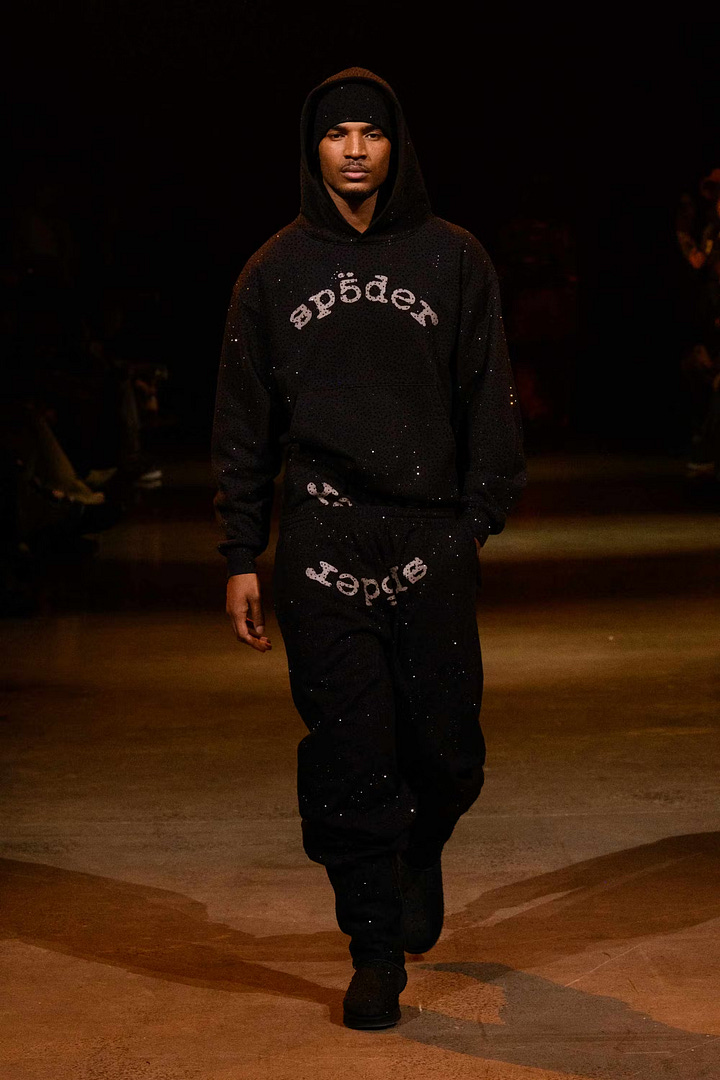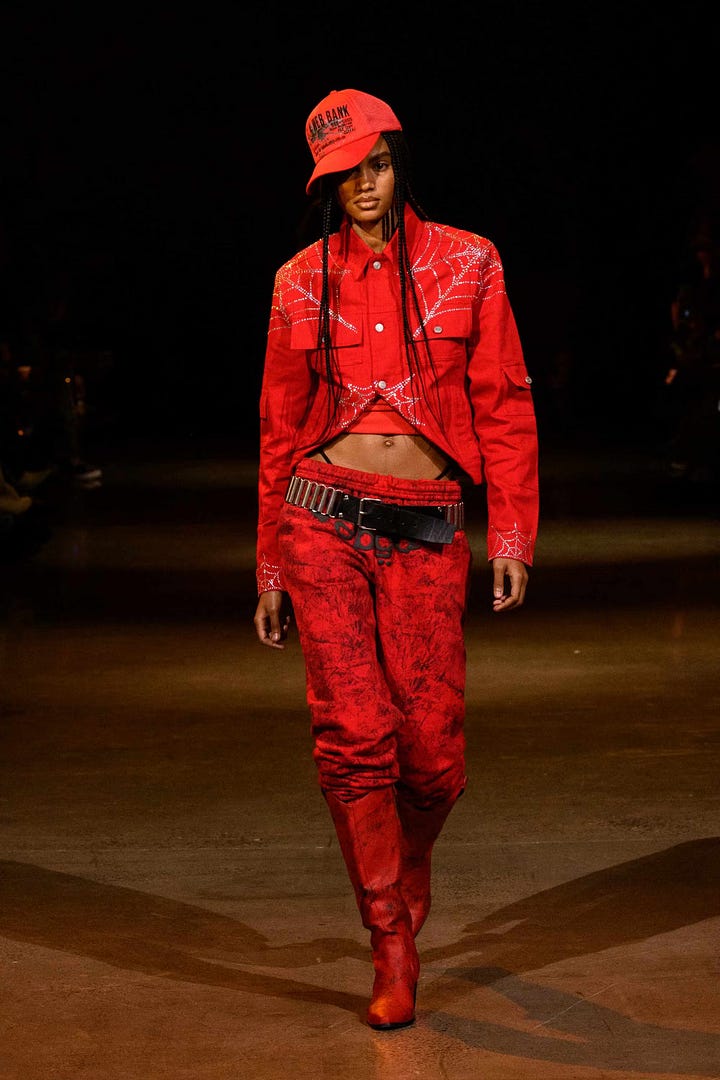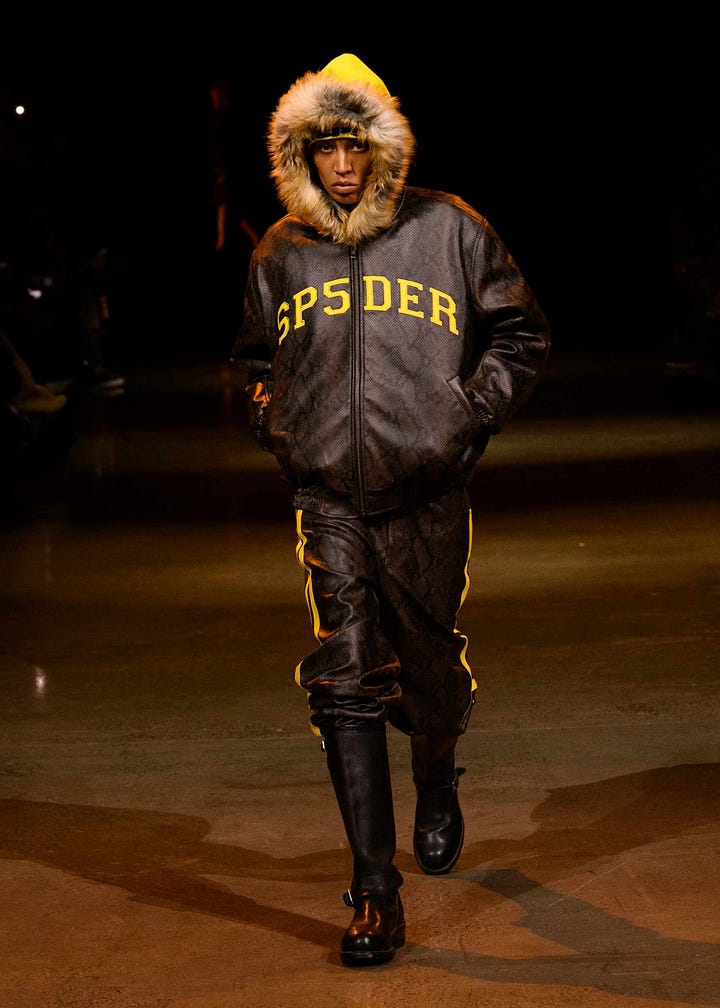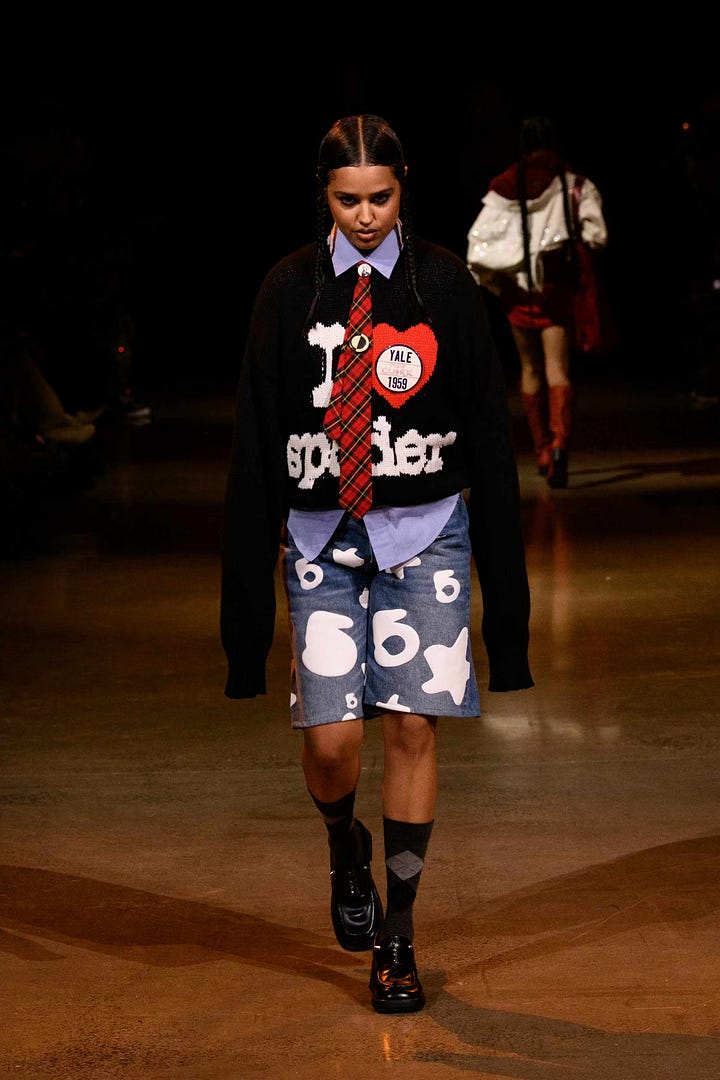If you’ve been on social media lately, you’ve probably seen Sp5der everywhere. The bold graphics, neon colors, spider web designs, it’s got that chaotic streetwear energy that feels fresh. People are eating it up.
Young Thug started the brand in 2019, but it really took off recently. Celebrities wear it. Hypebeasts want it. And, of course, it’s getting that “cool, underground, but also luxury” treatment.
But let’s talk about what no one’s really asking—is Sp5der sustainable? Or is it just another streetwear brand cashing in on the hype?
The Look: Where Streetwear Meets Art
First off, I get why people love it. It’s not just another brand slapping logos on hoodies. Sp5der feels more like wearable art. It’s messy, futuristic, kinda grunge. It’s got that early-2000s, chaotic MySpace energy mixed with luxury fashion.
And yeah, fashion as art is great. But the problem? Art doesn’t always care about sustainability. A lot of brands get so caught up in aesthetics and hype that they don’t think about how their clothes are actually made.
So what about Sp5der? Are they doing anything different?




Do They Actually Care About Sustainability?
1. The Materials—Better Than Fast Fashion, But…
Okay, so Sp5der does use some organic cotton and recycled polyester, which is better than nothing. But they don’t say what percentage of their collections actually use these materials.
Are we talking a few limited-edition pieces? Or is it actually a core part of their production? No real transparency here, which always makes me skeptical.
Also, let’s not pretend recycled polyester is a perfect solution. Yeah, it’s “better” than virgin plastic, but it still sheds microplastics every time you wash it. So, kinda a half-step toward sustainability, not a real fix.
2. Ethical Manufacturing—Big Question Mark
Sp5der says they focus on ethical manufacturing and fair wages, but where’s the proof? No breakdown of where the factories are, who makes the clothes, or what certifications they have.
It’s easy for brands to throw around words like “ethical” and “responsibly made,” but without receipts, it doesn’t mean much.
3. Eco-Friendly Practices—Some Effort, But Nothing Game-Changing
They use low-impact dyes and water-based inks, which is great because traditional dyeing is super harmful to the environment. Also, they’ve ditched plastic packaging in favor of recycled materials, which I respect.
But here’s the thing—if a brand is pushing out new drops constantly, does it really matter if they’re using better dyes?Overproduction is the real issue in fashion, not just materials.
The Real Problem: Hype-Driven Overconsumption
Even if Sp5der did everything “right” with materials and factories, there’s still a bigger problem:
🔥 The hype machine. Limited drops, exclusivity, resale culture—it all fuels fast-moving consumption.
🎭 Trendy, not timeless. Let’s be honest, most people buying Sp5der right now aren’t thinking about keeping these clothes forever. They’re chasing the moment.
💰 The fake market effect. Whenever a brand blows up, fakes flood the internet. Those knockoffs? Made in factories with zero ethical or environmental standards.
This isn’t just a Sp5der problem. It’s a streetwear problem. The whole business model is based on constantly making new stuff, and that’s never going to be fully sustainable.
So… Is Sp5der Sustainable?
Not really.
Yeah, they’re doing a few things better than the average streetwear brand—better fabrics, better dyes, less plastic packaging. But there’s no real transparency about labor conditions, and they’re still pushing new drops all the time.
If you’re buying Sp5der, buy it because you like the designs. But if you’re looking for truly sustainable streetwear? Thisisn’t it.
Where Does Streetwear Go From Here?
Honestly, I’d love to see a brand take streetwear and actually make it slow fashion. Limited drops, but not in a “fake exclusivity” way—more like, "We make small batches, and that’s it."
Or using truly circular materials. Imagine a hoodie you could return, recycle, and have remade into a new one. That’sthe kind of innovation that would make hype brands actually sustainable.
Maybe Sp5der evolves into that someday. But right now, it’s just another brand riding the hype cycle.
What Do You Think?
Can streetwear ever be sustainable? Or is the whole culture built on hype and excess? Let’s talk.
Vera
I really hope you're enjoying The Sustainability Pulse, my weekly newsletter looking at sustainability in the fashion industry. If you find the tips and insights useful, please share these articles to help spread the word.
My writing is supported entirely by paid subscriptions—there are no ads, paid placements, or sponsored content here. It'sall powered by you, the reader.




